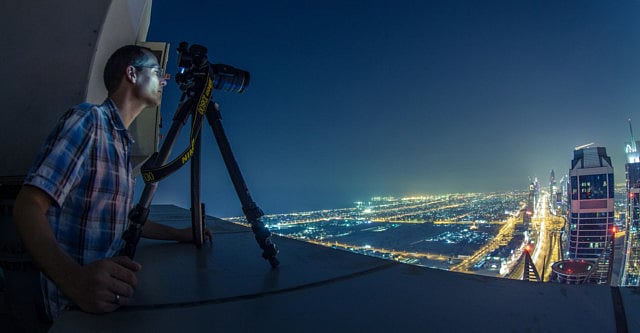Capture the city
From art to architecture, there is no dearth of creativity in cities. We take you through the redefined urban landscapes to find out what’s made them every photographer’s delight

Cities are not only microcosms of everyday social, political and capitalistic life, but they also reflect our imagination, and desires, and are altars erected in homage to our excess.
The World Health Organisation defines urbanisation as the demographic transition from rural to urban. Today, for the first time ever, the majority of the world’s population lives in cities. A hundred years ago, two out of every ten people lived in urban area. By 2030, six out of every ten people will live in a city, and by 2050, this proportion will increase to seven out of ten people.
Much like Pygmalion who fell in love with a statue he had carved, we are increasingly intrigued by our urban inventions leading to what scholars are calling ‘spectacularization’ of the city. And one of the modes of expressing this fascination with all things urban is through photography. Add to this the spread of the internet and the rise of the intrepid blogger offering creative havens of self expression. And when this creativity is aided by technology and the proliferation of the smartphone, capturing the urban landscape becomes almost de rigueur.
An urban love affair
“Urbanisation has reached new heights with cities constantly adapting and developing to support the increasing number of people living in them, which makes them fascinating, awe-inspiring and captivating subjects for documentaries such as Strip the City,” says Lee Hobbs, Channel Director, Emerging Business, Discovery Channel. Recently premiered on Discovery Channel HD, Strip the City is a series that takes viewers on an incredible global journey around some of the biggest metropolises on the planet, including Dubai.
For Thomas Birke, Berlin-based urban photographer and blogger, his love affair with cities is multifold. “The first thing I find impressive is my perception of opportunity. When I sit in a street cafe in Paris, I see thousands of people dashing by, talking, making plans, doing things, I feel that I am in the middle of everything. A dense city makes me feel complete and satisfied. Secondly, cities offer so many shapes and lights forming a landscape that is organic and beautiful and then there is the practical angle, in dense cities you can find everything you need within a small radius.”
So incredibly strong is the urge to capture every facet of the city on film, that it has given rise to popular platforms from the London Street Photography Festival in the UK to the Toronto Urban Photography Festival (TUPF). The latter, describe the organisers, is about redefining ‘street’ and ‘urban’ within the context of photography, while at the same time utilising the photographic medium to explore notions of the city.
“Cities are fascinating because they are similar to a human body: they have a heart, a brain, a pulse, veins and arteries, and are in constant flux, ingesting and excreting, consuming and discarding. It’s the excitingness and dynamism that make it a photographer’s dream and the wanderer’s playground,” says Cliff Davidson, Executive Director of TUPF.
What’s trending
Bemoaning the lack of subject matter to shoot is never the case with urban photographers. From an increasing interest in urban art to architecture there is no dearth of creativity. But along with a love for all things the city throws up, there is a greater awareness of capturing it to perfection. “The biggest trends I see in street photography is the return to analogue cameras, a return to black-and-white, the inclusion and acceptance of objects and cityscapes, collectives of photowalkers, and street portraiture in lieu of candid shots,” observes Davidson.
As photography becomes cheaper and more accessible with digital cameras, there is a return to the romantic with more photographers finding the tangibility of film fascinating. “Lomography has helped out significantly with using real-life photos that Instagram and others try to replicate. Black-and-white also seems to be popular as it makes images more dramatic. Additionally, the combination of urban exploration and collectives of photowalkers — the flânerie — is making a comeback, which, in turn, has increased the acceptance of objects and cityscapes in addition to the traditional candid street shots,” Davidson adds.
Ultimately, there is no escaping the city because as TUPF Vice Executive Director, Michaelangelo Yambao said ‘cities are where stuff happens’.
Sign up for the Daily Briefing
Get the latest news and updates straight to your inbox
Network Links
GN StoreDownload our app
© Al Nisr Publishing LLC 2025. All rights reserved.